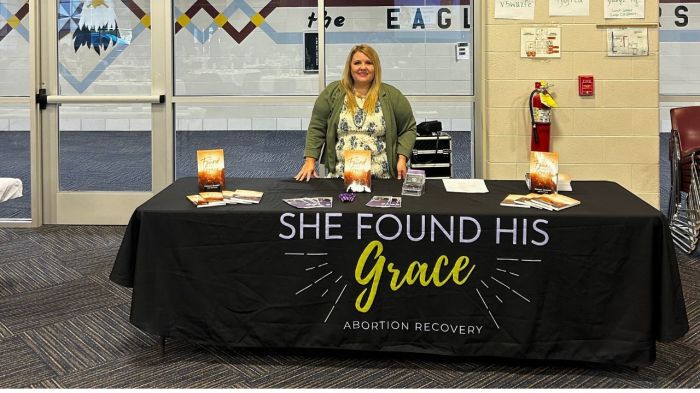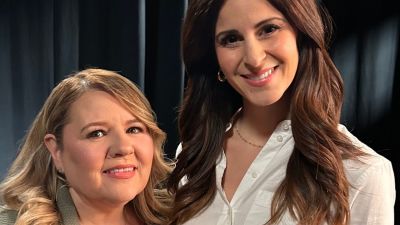
Serena Dyksen had never even heard the word “abortion” until a family doctor recommended that her parents take her for one at the age of 13 after she was raped and impregnated by her uncle.
“One day, I was on the school bus, and I just blurted out to someone what had happened to me,” Dyksen told The Christian Post in an interview. “I think I was just at a point in my life where I needed help.”
Becoming pregnant from her uncle in the late 1980s was something Dyksen tried to hide at first out of shame. But a guidance counselor later pulled Dyksen out of choir class to ask if a family member had assaulted her. At first, the child didn’t want to admit she was assaulted, but she eventually did. The girl’s parents came and took her to the family doctor, who referred them to an abortion facility.
Dyksen’s parents then brought her to the Women’s Pavilion Center in South Bend, Indiana, one of several facilities operated by Ulrich George Klopfer, who died in September 2019 and made headlines after authorities in Will County, Illinois, were alerted to the discovery of over 2,000 fetal remains at his home. Additional remains were later discovered in the trunk of the abortionist’s car.
Fast forward to today, Dyksen uses her experience as a rape victim who hemorrhaged after the adults in her life persuaded her to go through with an abortion as a child to lead other women who underwent abortions find healing and forgiveness in their lives through the ministry she founded, She Found His Grace.
‘I hemorrhaged everywhere’

Reflecting on her abortion experience, Dyksen remembered that the staff at the Women’s Pavilion Center separated her from her parents during the abortion.
At the time, Dyksen thought she and her family were at a doctor’s office, one that she noticed was rather dirty, but she believed that the staff would help her.
“And I didn’t know how they were going to help, so when they asked if I was ready for the abortion, I just nodded my head,” Dyksen explained.
When Klopfer came into the room to perform the abortion, Dyksen said he looked at her and remarked, “This won’t take long.” Later, when Dyksen started screaming during the abortion due to the pain, she said Klopfer told her to shut up.
From another room in the facility, Dyksen’s mother could hear her daughter screaming. When she tried to go and help her daughter, according to Dyksen, the staff called the police and made her mother leave the clinic.
After the abortion, Dyksen was placed in a recovery room with other women, but no one would look at one another. The room was filled with what Dyksen described as “nasty, brown vinyl recliners.”
“When I stood up, I hemorrhaged everywhere, and my dad carried me out,” she recalled. “No one came to check on me. There was no follow-up care, none of that.”
The abortion experience would continue to haunt Dyksen and her family for years to come.
“We were already kind of dysfunctional, you know, a lot of brokenness,” the ministry founder said. “This completely took it over the edge. My mom ended up checking herself into the psych ward. And then my dad eventually left our family.”
At 16, Dyksen became pregnant again, this time by her boyfriend at the time, Bruce. The two went to a Planned Parenthood in Elkhart together, having learned about the organization after representatives visited their school to teach sexual education.
The pair didn’t know much about Planned Parenthood, and they thought it was just one of many potential resources.
“So we went to [Planned Parenthood] and they said, ‘You’re young, you’re in school, and you’re poor. You should abort your baby,'” she said.
After the appointment, Dyksen sat outside in the parking lot with Bruce. While Bruce had been raised in a religious home, the church he attended didn’t talk about abortion. It was while the couple discussed what to do next that Dyksen decided to tell Bruce about the abortion she had at 13.
“And he said, ‘I don’t know how we’ll figure it out, but we’ll figure it out,'” she remembered. “And we chose life that day.”
Today, Dyksen and her husband have been married for over 30 years, but the lasting trauma from Dyksen’s abortion almost destroyed their marriage. She also suffered a miscarriage at the age of 23, which awakened some of her unresolved pain.
“And even then, I didn’t connect the dots that I had a double grief because of the abortion,” she explained. “I eventually had an ovary rupture, and I nearly bled to death. And then by 29, I had to have a complete hysterectomy.”
Dyksen turned to drugs and alcohol to help numb the pain, which she didn’t realize at the time was connected to the abortion she had years ago. As for Bruce, Dyksen knew that he could see she was hurting, but he didn’t know how to fix the problem.
The couple sought counseling, and gradually, God restored their marriage. During the counseling appointments, Dyksen opened up about the trauma that resulted from her rape, not the abortion.
‘Now is the time to tell the rest of your story’
In 2019, a friend invited Dyksen to see the movie “Unplanned,” which tells the story of how Abby Johnson, the former director of a Planned Parenthood clinic, left the abortion industry and became a pro-life advocate. The film resonated with Dyksen, who could relate to the grief Johnson felt after her two abortions.
“I heard the Lord say, ‘Now is the time to tell the rest of your story,’ Dyksen said. “I had told the Lord, ‘I’ll do anything you ask me to do, but don’t ask me to be a speaker,’ which is hilarious. I really thought that I was going to go to abortion clinics and help women choose life.”
Dyksen reached out to her local Right to Life affiliate for training on sidewalk counseling outside abortion facilities. During the training, Dyksen connected with a Catholic sister who had led the session. After sharing her story, the nun asked if Dyksen had ever sought healing for the abortion.
At first, Dyksen was dismissive of the idea, but then the sister asked, “‘How do you expect to help others if you’re not willing to go there yourself?'”
In 2019, Dyksen went on two abortion recovery retreats. The first was called “Forgiven and Set Free.” The second was “Deeper Still.” During these abortion recovery retreats, Dyksen was able to properly grieve for the child she had lost to abortion and begin healing.
The following year, Dyksen published a book titled She Found His Grace, which recounts the abortion she had at 13, and how she eventually found peace and forgiveness.
After publishing the book, Dyksen heard from other post-abortive women whose experiences were similar to hers. Feeling as if God was calling them to start something, Dyksen and her husband founded She Found His Grace, a Christ-centered ministry that offers abortion recovery classes, both online and in-person, to men and women.
Through the ministry, men and women can sign up for weekly classes where they can surround themselves with a supportive community to help them navigate their feelings. SFHG centers around the idea that healing from an abortion is possible through faith in Jesus Christ.
In addition to abortion healing, Dyksen’s ministry helps women facing a challenging pregnancy by connecting them with housing, material assistance and emotional support.
The Redemption House
Over the years, Dyksen’s ministry became aware of the unmet needs of women who had undergone the abortion pill regimen, which has become the most common form of abortion conducted in the U.S.
Dysken said that many women who had reached out to SFHG after taking abortion drugs had stories that most people in the pro-life movement, even individuals who had been involved for a long time, have probably never heard before.
“We were hearing of women who were keeping their babies in their freezers and in their nightstands,” Dyksen said. “Because what happens is they take the pill, and then they see their baby, and they’re like, ‘What?'”
“And so, then they call the clinic, and the clinic says, ‘Just flush your baby down the toilet,'” she explained. “And they’re like, ‘I can’t do that.'”
Dyksen recounted the story of one woman she heard about who developed an unhealthy attachment to her cat after taking abortion drugs. The cat had eaten the remains of the woman’s unborn child after she had placed them on the counter.
The stories of these women led Dyksen to pray for a way to help them. Those prayers inspired The Redemption House, which SFHG hopes will serve as a sanctuary for women nationwide suffering from abortion-related wounds.
The goal is to offer women a place to stay for one to three months before helping them transition into a longer Bible study through SFHG.
During a board meeting last year, when the subject of Dyksen’s fervent prayers arose, one of the members suggested exploring a house for sale in Indiana. The six-bedroom home is situated on a sprawling 38-acre property.
In February, the ministry made an appointment with a realtor to visit the property, but the realtor insisted that there was no way SFHG would have enough money to purchase it. The family that owns the house, however, is pro-life. According to Dyksen, the family wants SFHG to buy the house and use it to serve post-abortive women.
The cost of the house is $2 million, which SFHG will need to raise by September.
At the time of this interview, Dyksen said the ministry had raised $70,000. SFHG typically raises $130,000 per year to run the organization, making The Redemption House one of the most ambitious projects the ministry has undertaken to date.
“We’re just stepping out in faith,” Dyksen said. “Our prayer is that if God doesn’t want this for us, then He’ll shut the door.”
Samantha Kamman is a reporter for The Christian Post. She can be reached at: samantha.kamman@christianpost.com. Follow her on Twitter: @Samantha_Kamman















